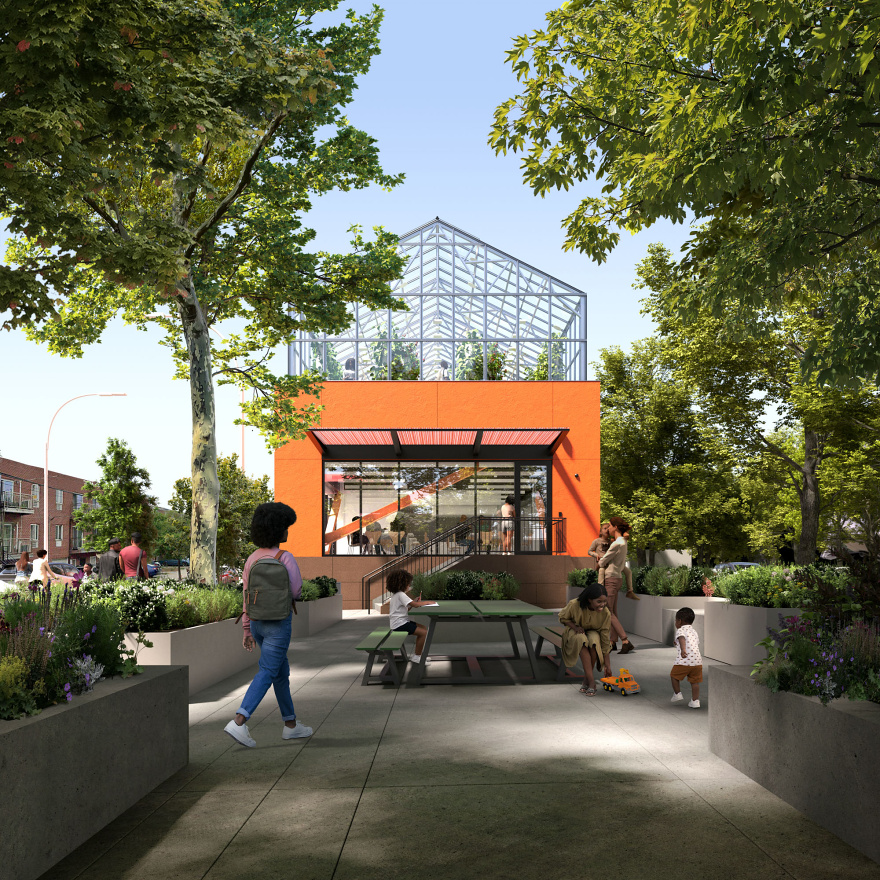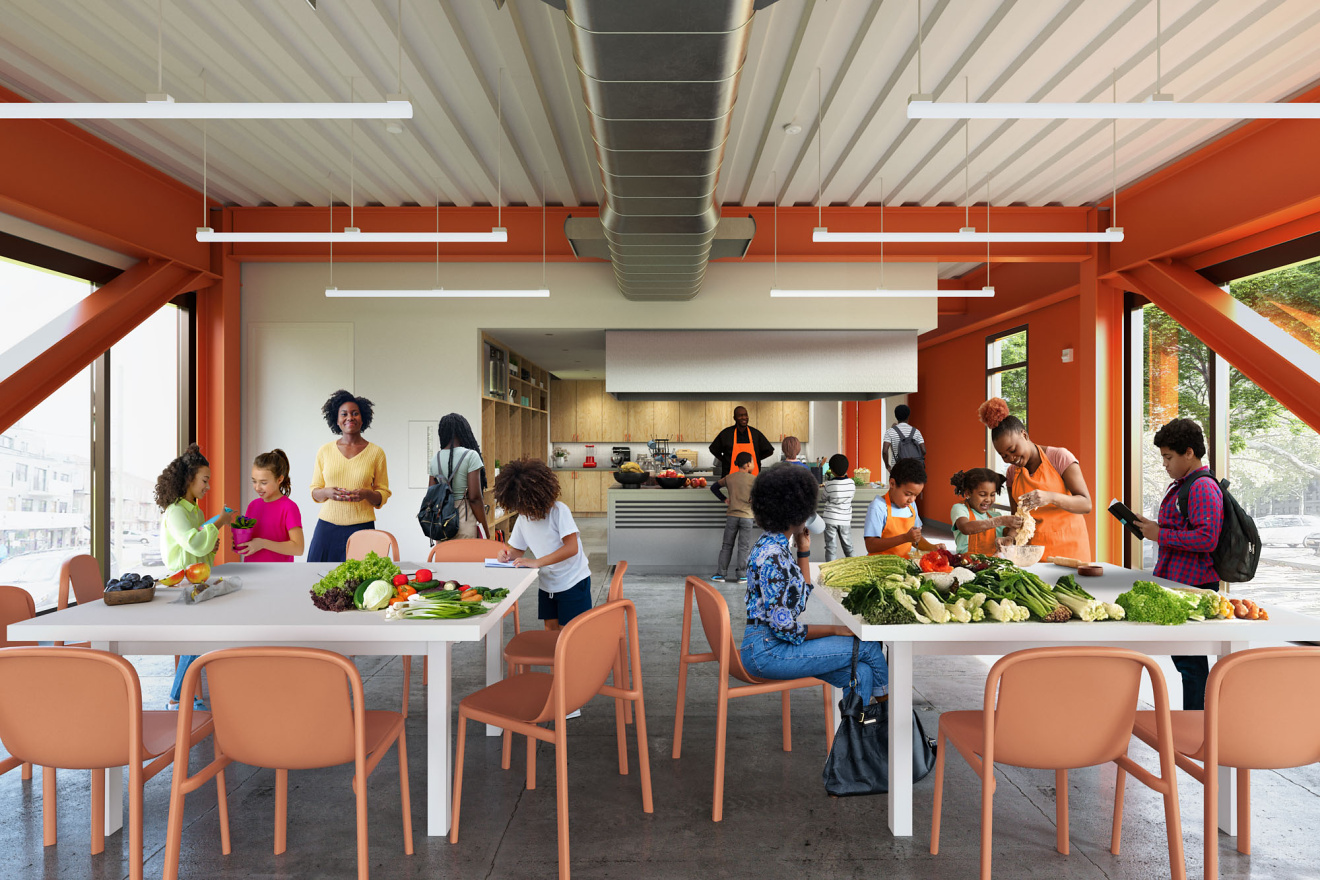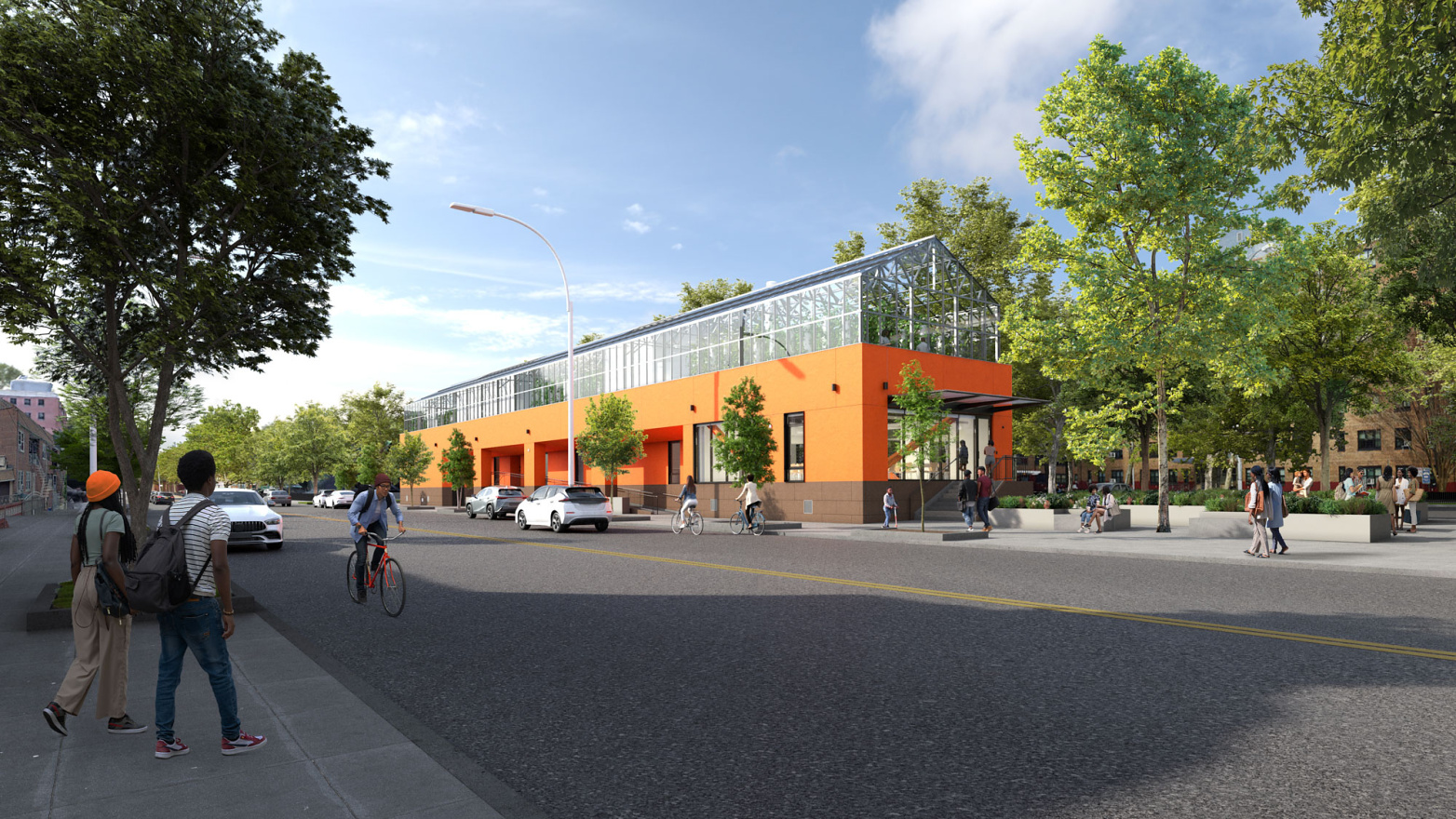Earlier this month, the City of New York broke ground on the new $18.2 million Marlboro Agricultural Education Center (MAEC) at the New York City Housing Authority’s Marlboro Houses in Brooklyn.
In line with the mission of its nonprofit operator, The Campaign Against Hunger, MAEC aims to strengthen food autonomy and security in underserved neighborhoods. MAEC will provide Marlboro Houses with diverse, community-oriented programs.
Designed by the Studio Gang and built by Consigli Construction Co., the 9,900-sf center will feature a rooftop greenhouse for raising plants and fish. The second-floor greenhouse will serve as a learning lab for schoolchildren and visitors and will help young adults engage with local, sustainable food production. On the ground floor, flexible teaching and community spaces will offer cooking and nutrition classes, among other programs. In the winter, MAEC will host an indoor market.
The building’s large windows and generous sidewalk frontage aim to strengthen connections with the surrounding neighborhood. Entrances on multiple sides create physical and visual connections to the street and surrounding area. A small public terrace and planter garden will encourage visitors to stop by.
Located in a coastal flood zone, the building will be elevated, which also will create opportunities for street furniture. The sustainable design includes passive heating and cooling, solar access, all-electric systems, and rainwater storage and reuse. The project, which targets LEED Gold certification, will use materials with minimal maintenance for a lifecycle of over 60 years.
The MAEC project leverages a design-build project delivery method to remove lengthy contracting from the traditional delivery method that historically has been used for city capital projects, according to the City of New York’s press release. The design-build method also will shorten timelines and increase participation by minority- and women-owned businesses.
On the Building Team:
Project operator: The Campaign Against Hunger
Design architect: Studio Gang
Design-build contractor: Consigli Construction Co.
Landscape architect: Eponymous Practice
Structural engineer: Thornton Tomasetti
Civil engineer: Philip Habib & Associates
Geotechnical engineer: Langan
MEPFP: BALA Consulting Engineers
Greenhouse enclosure design: Prospiant




Related Stories
| Jan 22, 2014
SOM-designed University Center uses 'sky quads,' stacked staircases to promote chance encounters
The New School's vertical campus in Manhattan houses multiple functions, including labs, design studios, a library, and student residences, in a 16-story building.
| Jan 17, 2014
The Starchitect of Oz: New Gehry building in Sydney celebrates topping out
The Dr. Chau Chak Wing Building at the University of Technology, Sydney, will mark Frank Gehry's debut project in the Australian metro.
| Jan 15, 2014
Report: 32 U.S. buildings have been verified as net-zero energy performers
The New Buildings Institute's 2014 Getting to Zero Status report includes an interactive map detailing the net-zero energy buildings that have been verified by NBI.
| Jan 13, 2014
Custom exterior fabricator A. Zahner unveils free façade design software for architects
The web-based tool uses the company's factory floor like "a massive rapid prototype machine,” allowing designers to manipulate designs on the fly based on cost and other factors, according to CEO/President Bill Zahner.
| Jan 13, 2014
AEC professionals weigh in on school security
An exclusive survey reveals that Building Teams are doing their part to make the nation’s schools safer in the aftermath of the Sandy Hook tragedy.
| Jan 11, 2014
Getting to net-zero energy with brick masonry construction [AIA course]
When targeting net-zero energy performance, AEC professionals are advised to tackle energy demand first. This AIA course covers brick masonry's role in reducing energy consumption in buildings.
| Jan 10, 2014
What the states should do to prevent more school shootings
To tell the truth, I didn’t want to write about the terrible events of December 14, 2012, when 20 children and six adults were gunned down at Sandy Hook Elementary School in Newtown, Conn. I figured other media would provide ample coverage, and anything we did would look cheap or inappropriate. But two things turned me around.
| Jan 10, 2014
Special Report: K-12 school security in the wake of Sandy Hook
BD+C's exclusive five-part report on K-12 school security offers proven design advice, technology recommendations, and thoughtful commentary on how Building Teams can help school districts prevent, or at least mitigate, a Sandy Hook on their turf.
| Jan 9, 2014
How security in schools applies to other building types
Many of the principles and concepts described in our Special Report on K-12 security also apply to other building types and markets.
| Jan 9, 2014
16 recommendations on security technology to take to your K-12 clients
From facial recognition cameras to IP-based door hardware, here are key technology-related considerations you should discuss with your school district clients.

















